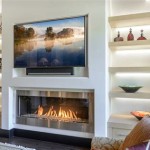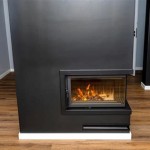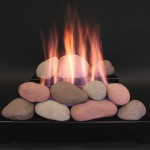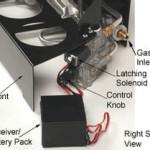Brick Fireplace With Tiled Hearth: A Comprehensive Overview
The brick fireplace with a tiled hearth is a classic and enduring architectural feature found in homes across various styles and eras. It represents a focal point, providing warmth, ambiance, and aesthetic appeal. Understanding the components, construction, advantages, and maintenance aspects of this feature is essential for homeowners considering installation, renovation, or simply wishing to appreciate its inherent qualities. This article will delve into the intricacies of brick fireplaces featuring tiled hearths, exploring their design elements, functional attributes, and the overall contribution they make to a home's character.
The combination of brick and tile offers a unique blend of textures and colors, allowing for customization and seamless integration into diverse interior design schemes. Brick, known for its durability and rustic charm, forms the primary structure of the fireplace, while tile, valued for its heat resistance and decorative potential, serves as the hearth surface. The hearth, the non-combustible area extending in front of the fireplace opening, is crucial for safety, preventing embers and sparks from igniting flammable materials on the surrounding floor.
Key Point 1: Design and Material Considerations
The design of a brick fireplace with a tiled hearth is highly adaptable, offering a vast range of possibilities to suit individual preferences and architectural styles. The brick itself can vary in color, texture, size, and laying pattern. Common brick colors range from traditional reds and browns to more contemporary grays and whites. The texture can be smooth, rough, or tumbled to achieve different aesthetic effects. Brick sizes also vary, influencing the overall appearance of the fireplace. Common laying patterns include running bond, stack bond, and herringbone, each creating a distinctive visual effect.
The choice of tile for the hearth is equally varied. Tile materials commonly used include ceramic, porcelain, slate, and natural stone. Ceramic and porcelain tiles are popular choices due to their affordability, durability, and wide range of colors and patterns. They are also relatively easy to clean and maintain. Slate tile offers a natural, textured look with inherent slip resistance, making it a practical choice for a hearth. Natural stone tiles, such as granite and marble, provide a luxurious and sophisticated aesthetic. However, they often require more specialized maintenance.
The size and shape of the hearth are also important design considerations. Building codes typically dictate minimum hearth dimensions based on the size of the fireplace opening. However, homeowners can opt for larger hearths to create a more prominent focal point or to provide additional seating space. The shape of the hearth can be rectangular, square, curved, or custom-designed to complement the overall architecture of the room.
Furthermore, the design can incorporate additional features, such as a mantel, surround, or built-in shelving. The mantel, a decorative shelf above the fireplace opening, provides a space for displaying artwork, photographs, and other decorative items. The surround, which frames the fireplace opening, can be made of brick, tile, stone, or wood, adding another layer of visual interest. Built-in shelving on either side of the fireplace can provide storage for books, firewood, or other items, enhancing the functionality of the space.
The integration of the fireplace into the overall room design is crucial. The color palette of the brick and tile should complement the existing wall colors, flooring, and furniture. The style of the fireplace should also be consistent with the overall architectural style of the home, whether it be traditional, contemporary, rustic, or modern. Thoughtful consideration of these design elements will ensure that the brick fireplace with a tiled hearth becomes a cohesive and harmonious part of the living space.
Key Point 2: Construction and Installation Process
The construction of a brick fireplace with a tiled hearth is a complex process that requires skilled craftsmanship and adherence to building codes. It is typically best left to experienced professionals. The process begins with preparing the foundation, which must be strong and stable enough to support the weight of the fireplace. This often involves pouring a concrete slab or reinforcing an existing floor structure.
Next, the firebox is constructed using firebrick, a specialized type of brick designed to withstand high temperatures. The firebox is the chamber where the fire burns, and it must be properly insulated to prevent heat from transferring to the surrounding structure. A flue, a vertical channel that carries smoke and combustion gases out of the fireplace, is then built above the firebox. The flue is typically lined with clay tiles or stainless steel to protect the chimney from corrosive gases.
The exterior brickwork is then constructed around the firebox and flue. The bricks are laid in a chosen pattern, and mortar is used to bind them together. The mortar must be carefully mixed and applied to ensure a strong and durable bond. As the brickwork progresses, the fireplace surround and mantel are installed, if included in the design.
Once the brickwork is complete, the hearth is installed. The surface beneath the hearth needs to be level and capable of supporting the weight of the tiles and any additional weight placed upon it, such as seating or decorative items. A layer of cement board may be applied to create a smooth and stable surface. The tiles are then laid on top of the cement board, using thin-set mortar. Grout is used to fill the spaces between the tiles, providing a watertight seal and enhancing the overall appearance of the hearth.
Throughout the construction process, it is essential to ensure that the fireplace meets all applicable building codes and safety regulations. This includes proper clearances from combustible materials, adequate ventilation, and compliance with fire safety standards. A professional fireplace installer will be familiar with these requirements and will ensure that the fireplace is installed safely and correctly.
Key Point 3: Maintenance and Safety Considerations
Proper maintenance is crucial for ensuring the safe and efficient operation of a brick fireplace with a tiled hearth. Regular cleaning and inspection will help to prevent problems and extend the lifespan of the fireplace. The frequency of cleaning will depend on how often the fireplace is used, but it is generally recommended to clean the chimney at least once a year.
Chimney cleaning involves removing creosote, a flammable substance that builds up in the chimney as a result of burning wood. Creosote buildup can lead to chimney fires, which can be dangerous and damaging. A professional chimney sweep can safely and effectively remove creosote and inspect the chimney for any signs of damage or deterioration.
The hearth should also be regularly cleaned to remove ash, soot, and other debris. A broom or vacuum cleaner can be used to clean the surface of the tiles. For stubborn stains, a mild detergent and water can be used. Harsh chemicals should be avoided, as they can damage the tiles. The grout between the tiles should also be cleaned periodically to prevent staining and mildew growth. A grout brush and a grout cleaner can be used to scrub the grout lines.
In addition to cleaning, regular inspections are essential. The firebox should be inspected for cracks or damage to the firebrick. The flue should be inspected for obstructions or deterioration. The mortar joints should be inspected for cracks or missing mortar. Any problems should be addressed promptly to prevent further damage and ensure the safe operation of the fireplace.
Safety is paramount when operating a brick fireplace with a tiled hearth. Always use a fire screen to prevent sparks and embers from escaping the firebox. Never leave a fire unattended. Keep flammable materials away from the fireplace. Ensure that the room is adequately ventilated to prevent carbon monoxide buildup. Install carbon monoxide detectors in the home and test them regularly. By following these safety precautions, homeowners can enjoy the warmth and ambiance of their brick fireplace with a tiled hearth without compromising their safety.
Furthermore, the type of wood burned significantly impacts efficiency and safety. Seasoned hardwood, such as oak or maple, burns cleaner and hotter than softwoods like pine. Burning unseasoned or wet wood generates more smoke and creosote, increasing the risk of chimney fires. It is also crucial to avoid burning treated wood, painted wood, or manufactured logs not specifically designed for fireplaces, as they can release harmful chemicals into the air.
Finally, consider the environmental impact of wood burning. While a wood-burning fireplace can provide supplemental heat, it can also contribute to air pollution. Using an EPA-certified wood stove or fireplace insert can significantly reduce emissions. These appliances are designed to burn wood more efficiently and cleanly, minimizing the release of pollutants into the atmosphere. Regularly checking and maintaining the fireplace’s damper is also essential to prevent heat loss when the fireplace is not in use.

Tile Near Fireplace Instructions Hearth Tiles Design

Modern Jane Fireplace Facelift Paint Hearth Tiles

Brick Tiling Your Fireplace Slips

Fireplace Update With L Stick Tiles Field Court
Tiling Fireplace Hearth Over Brick Ceramic Tile Advice Forums John Bridge
1920s House How Would I Replace The Tiled Hearth Mortar Bed Ceramic Tile Advice Forums John Bridge
.jpg?strip=all)
Brick Fireplace Design Installation Scarlett Fireplaces
And She Knits Too Home Hearth

White Painted Brick Fireplace With Herringbone Tile Hearth Tiles

Heating Things Up White Brick Fireplace Hearth Tiles Slate
Related Posts








